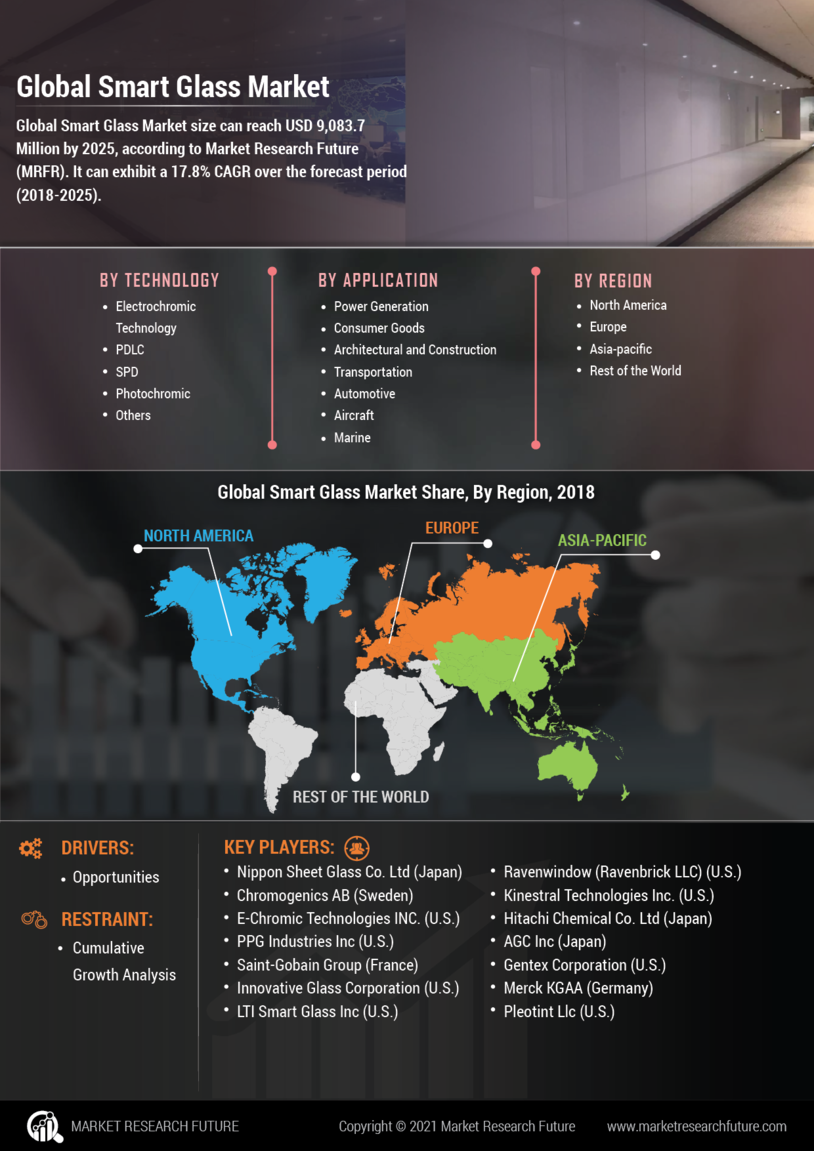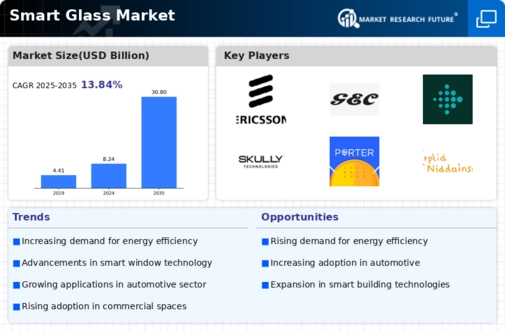Smart Glass Market Summary
As per Market Research Future Analysis, the Smart Glass Market was valued at USD 6.5 billion in 2022 and is projected to grow from USD 7.3996 billion in 2023 to USD 16.10 billion by 2030, with a CAGR of 13.84% from 2024 to 2030. Key drivers include the energy-saving capabilities of smart glass and its increasing application in the healthcare sector. The market is significantly influenced by the architectural and construction industries, focusing on green building regulations and energy efficiency. Electrochromic technology dominates the market, accounting for 49% of revenue in 2021, while the Asia-Pacific region leads in market share, valued at USD 2.97 billion in 2022.
Key Market Trends & Highlights
The Smart Glass Market is witnessing significant growth driven by energy efficiency and technological advancements.
- Smart Glass Market Size in 2022: USD 6.5 billion.
- Projected Market Size by 2030: USD 16.10 billion.
- CAGR from 2024 to 2030: 13.84%.
- Electrochromic technology held 49% market share in 2021.
Market Size & Forecast
| 2022 Market Size | USD 6.5 billion |
| 2023 Market Size | USD 7.3996 billion |
| 2030 Market Size | USD 16.10 billion |
| CAGR (2024-2030) | 13.84% |
Major Players
Key players include Honeywell International Inc., General Electric Company, Force Impact Technologies INC., and Huawei Technologies Co. Ltd.


















Leave a Comment